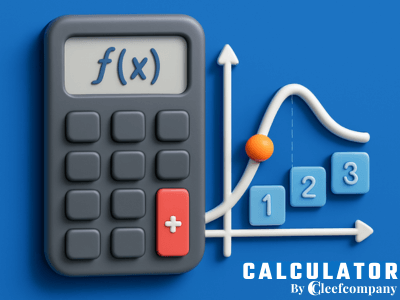Taylor Approximation Calculator – Estimate functions with mathematical precision
With this tool, you can obtain the approximation of a function around a specific point using the Taylor series.
✅ Fast and accurate – Just enter your details and get the result instantly.
✅ Avoid errors – Automatic calculation without spreadsheets.
✅ Optimize your analysis – Better understand the behavior of a complex function.
Use our calculator now and save time on your calculations.
Example Calculation with the Taylor Approximation Calculator
Imagine you want to approximate the function f(x) = eˣ around a = 0 with order 3 and evaluate at x = 1:
🔹 f(x) = eˣ
🔹 Order = 3
🔹 Point a = 0
🔹 x = 1
📐 Applied formula: f(1) ≈ 1 + 1 + ½ + 1/6
📊 Result: f(1) ≈ 2.666…
This means that the Taylor series provides a close estimate of eˣ without calculating exponentials directly.
📢 Save time and improve your accuracy with this tool.
This is only for entrepreneurs, business owners and freelancers
Do you use complex calculations in your academic, engineering, or development work?
Get immediate results and reduce errors with our calculator.
🚀 If you need to launch your website, SaaS or online store, visit NippyLaunch.com
📈 If you need to do digital advertising and marketing for your company, visit CleefCompany.com
What is the Taylor Approximation Calculator?
The Taylor approximation calculator allows you to easily calculate an approximation of complex functions using polynomials centered at a point.
👉 Increase your mathematical efficiency by making decisions based on reliable estimates.
How Does Our Taylor Approximation Calculator Work?
Our calculator follows a simple three-step process:
1️⃣ Data Entry
🔹 Function f(x): the mathematical expression to approximate.
🔹 Order of the derivative: determines the precision of the approximation.
🔹 Expansion point to: center of development.
🔹 Value of x: where you want to evaluate the function.
2️⃣ Automatic Calculation
📐 f(x) ≈ f(a) + f′(a)(x−a) + f″(a)(x−a)²/2! +…
The system calculates the necessary derivatives and generates the estimated value.
3️⃣ Results and Recommendations
🔹 Useful for comparing functions with their local approximations.
🔹 Ideal for numerical analysis, modeling, and algorithm development.
Recommended books to master the Taylor development
Strengthen your understanding of differential calculus with these readings.
These books will help you delve deeper into the mathematical analysis and theory behind Taylor approximations.
1️⃣ Infinitesimal Calculus – Michael Spivak
Explores the theoretical foundations of calculus with a rigorous and elegant approach.
2️⃣ Mathematical Analysis – Tom M. Apostol
An advanced text covering Taylor series and their applications in detail.
3️⃣ Mathematical Methods for Physics and Engineering – Riley, Hobson, Bence
Ideal for applying the Taylor series in scientific and engineering contexts.
Why Use Our Taylor Approximation Calculator?
✅ Speed – Instant results without manual calculation.
✅ Accuracy – Based on exact formulas.
✅ Practical Application – Perfect for students, teachers, and engineers.
✅ Accessible – Available online without the need for external software.
Avoid These Common Mistakes When Using the Taylor Approximation Calculator
🚫 Entering ill-defined functions – Use valid, closed syntax.
🚫 Choosing too low an order – May affect the accuracy of the result.
🚫 Do not check expansion point – Affects convergence and accuracy.
Comparison: Taylor Calculator vs Traditional Methods
✅ Calculator – Fast, accurate results without manual errors.
❌ Manual – Requires long derivatives, error-prone, and slow.
✅ Calculator – Just enter the function and parameters.
❌ Manual – Requires time and constant review.
Frequently Asked Questions about the Taylor Approximation Calculator
How to use Taylor calculator easily?
Just enter the function, expansion point, order, and x-value. Click and get the result.
What is a Taylor approximation?
It is a way of estimating the value of a function using polynomials centered at a point.
What variables do I need to enter?
You must enter: function f(x), order n, expansion point a, and value of x.
What formula is used?
📐 f(x) ≈ f(a) + f′(a)(x−a) + f″(a)(x−a)²/2! + … + fⁿ(a)(x−a)ⁿ/n!
Is the approximation accurate?
The higher the order n, the more accurate the estimate.
Can I use this tool in exams?
It's great for practicing, but always check with your teacher.
Is it useful for engineering or physics?
Yes, it is used in simulations, series, optimization and more.
Is it valid for any function?
Only for functions derivable in the desired interval.
Do I need any previous knowledge?
Just the basics of derivatives and functions. The tool does the rest.
Can I save my results?
Yes, you can easily copy or export the results to use wherever you want.

